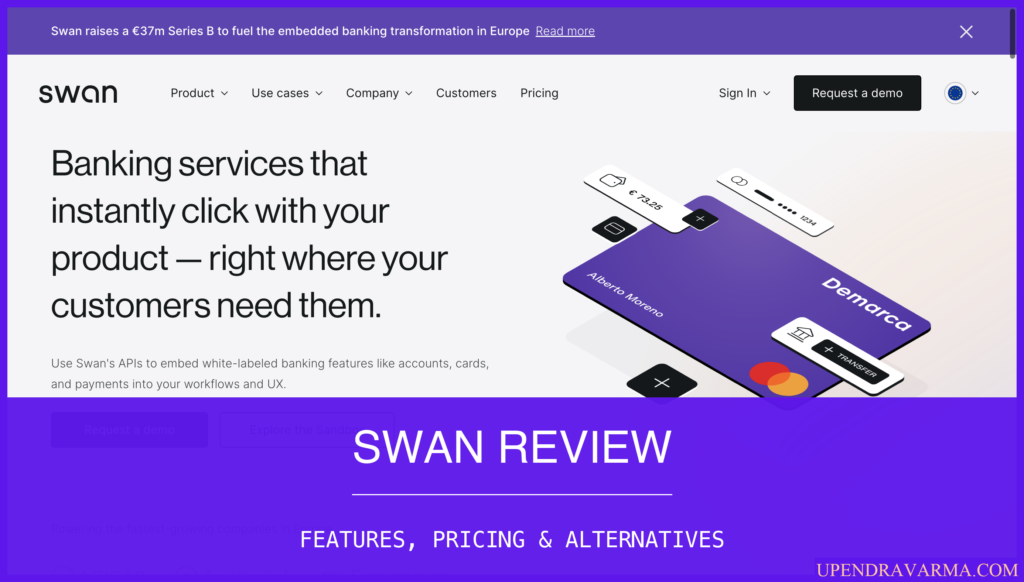Hey there! Upendra Varma here, and today we're going to dive deep into the world of Cube. If you're looking for a data app that can connect your data silos, provide consistent metrics, and power your AI and analytics with context, then Cube might just be the solution for you. So let's get started on this in-depth and fun review of Cube!
Cube Review: What is Cube?
Cube is a B2B SaaS product that offers a Semantic Layer for every data app. But what exactly is a Semantic Layer, you ask? Well, it's a centralized, single source of truth that connects data silos and drives consistent metrics. With Cube, you only need to define your metrics once, making it easier to create meaningful business definitions and pre-aggregate data for optimal results. Plus, Cube provides data modeling options in YAML and JS, giving you the flexibility to choose how you model your raw data.
Cube Review: How can it be used?
Cube can be used in a variety of ways, making it a versatile tool for different user profiles, companies, and industries. Whether you're looking to build embedded analytics, define metrics upstream for consistent data across all your apps, or trust your real-time data with a stack designed for consistency and speed, Cube has got you covered. It's all about connecting your data, providing context, and driving actionable insights.
Cube Review: Who is it for?
Cube is a data app that caters to a wide range of users. Whether you're a data engineer, developer, data scientist, or business analyst, Cube has something to offer you. Here are a few profiles of users who can benefit from Cube:
- Data engineers: Cube helps data engineers build consistent, secure, and performant embedded analytics.
- Developers: Cube provides APIs that can be easily integrated with data visualization tools and business intelligence dashboards, making it a great fit for developers.
- Data scientists: With Cube's semantic layer, data scientists can access consistent metrics and trust their real-time data for accurate analysis.
- Business analysts: Cube's centralized, single source of truth ensures that business analysts have access to the right metrics and can make data-driven decisions.
Cube Features
Now let's talk about some of the features that Cube has to offer. Here's a breakdown of the key features:
Data Modeling
- Cube allows you to model raw data into meaningful business definitions using YAML or JS.
- You only need to define your metrics once, creating a centralized, single source of truth.
Data Access Control
- Cube's semantic layer coordinates access control upstream of data applications, ensuring that only authorized users have access to the right metrics.
- Authorization is based on the security context, with authentication tokens generated based on your API secret.
Caching
- Cube's caching layer ensures that every downstream app stays updated with the latest information, all while maintaining low latency and cost-effectiveness.
- Cube provides a two-level caching system: in-memory cache and configurable pre-aggregations.
Instant APIs

- Cube offers SQL, REST, and GraphQL APIs, providing compatibility for data engineers and developers.
- These APIs can be integrated with data visualization tools, business intelligence dashboards, and popular front-end frameworks.
Cube Plans
If you're interested in learning more about Cube's pricing, I've written a more in-depth review about it on my blog. You can find it at cube pricing. There, you'll find all the details about Cube's pricing plans, including the Starter, Premium, Enterprise, and Enterprise Premier options.
Cube Alternatives
Diversifying your toolset with alternatives is a smart move in the ever-evolving world of data apps. Even though Cube is an exceptional tool, it's beneficial to consider its alternatives. Here are some notable ones you might want to look into:
Looker
Looker is a modern platform for data that offers solutions for businesses to access reliable and relevant data when they need it. With Looker's robust data platform, users can explore and analyze data in a fresh and intuitive way. Looker enables teams to break down data silos by integrating data from disparate sources into a single view. Users can then create reports and dashboards to visualize data trends and insights. It boasts an easy-to-use interface, making it accessible for users of various skill levels.
One of Looker's unique features is its built-in data modeling layer. This allows users to define business metrics in a central location, ensuring consistency across all analyses. Moreover, Looker offers robust data governance features, ensuring that sensitive data is accessed only by authorized users.
Tableau
Tableau is a leading data visualization tool that allows you to explore, visualize, and share data with ease. It's renowned for its user-friendly interface and drag-and-drop features, making it accessible for both technical and non-technical users. Tableau integrates with various data sources, providing you with a comprehensive view of your data.
Tableau stands out with its advanced visualization capabilities. It allows users to create interactive dashboards and stories that help communicate insights effectively. It also supports real-time data analysis and cloud-based sharing, enabling teams to collaborate and make data-driven decisions swiftly. Tableau's strong community and resources are an added advantage for new users and for those looking to advance their data visualization skills.
Metabase
Metabase is an open-source business intelligence tool that makes it easy to ask questions and learn from data. It offers a simple and clean interface that enables users to generate reports and dashboards without requiring extensive technical knowledge. Metabase stands out for its "Ask a Question" feature, which allows users to choose the data they're interested in and presents it in a comprehensible manner.
Metabase also allows you to create and share beautiful dashboards with just a few clicks. It supports a wide range of databases and has robust filtering options. One of its most commendable features is the ability to annotate data directly on the graphs, facilitating better context and understanding.
Each of these alternatives has its strengths and unique features, which might align better with your specific needs. Therefore, it's crucial to explore these options and determine which tool suits you the best. You might also want to consider factors like cost, user-friendliness, integration capabilities, and customer support while making your choice.
Cube Review: Pros & Cons
Now let's talk about some of the pros and cons of using Cube:
Pros:
- Cube provides a centralized, single source of truth, ensuring consistent metrics across all your data apps.
- The data modeling options in YAML and JS give you flexibility in how you model your raw data.
- Cube's caching layer keeps your downstream apps updated with the latest information, all while maintaining low latency and cost-effectiveness.
- The SQL, REST, and GraphQL APIs make it easy to integrate Cube with data visualization tools, business intelligence dashboards, and front-end frameworks.
Cons:
- Cube's pricing plans might not be suitable for all budgets, so be sure to check out the pricing review on my blog to see if it fits your needs.
Conclusion
In conclusion, Cube is a powerful data app that can help you connect your data silos, drive consistent metrics, and power your AI and analytics with context. Whether you're a data engineer, developer, data scientist, or business analyst, Cube has features that cater to your needs. So if you're looking to level up your data infrastructure and make data-driven decisions, give Cube a try.
I hope you found this in-depth review of Cube helpful! If you're interested in reading more reviews of SaaS products, be sure to check out my blog at saas blog. Happy data exploring!









